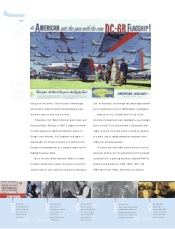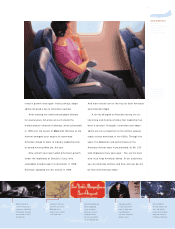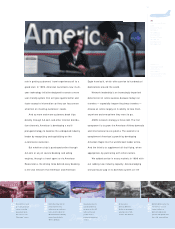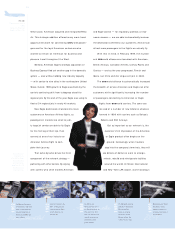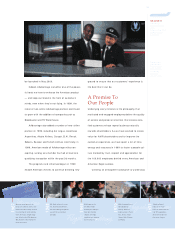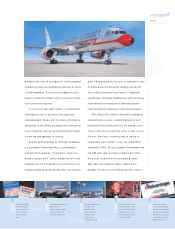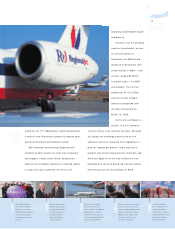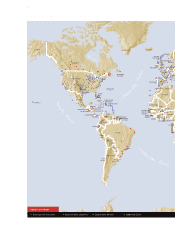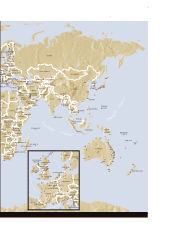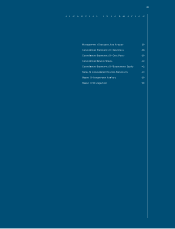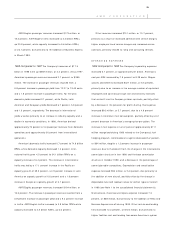American Airlines 1999 Annual Report Download - page 20
Download and view the complete annual report
Please find page 20 of the 1999 American Airlines annual report below. You can navigate through the pages in the report by either clicking on the pages listed below, or by using the keyword search tool below to find specific information within the annual report.
scheduled to expire in August 2001.
American was able to reach agreement on a new
contract with the Association of Professional Flight
Attendants (APFA) in May. Unfortunately, that agree-
ment was not ratified by the union membership.
However, American hopes to re-engage the negotiat-
ing team for this important work group and to reach
agreement on a new contract as soon as possible.
American’s third major contract is with the
Transport Workers Union, which represents the air-
line’s mechanics, fleet service clerks and other ground
personnel. That contract becomes amendable in 2001,
but we and the union leadership have discussed
the possibility of beginning negotiations on a
new agreement in advance of that date.
In late 1998, American’s airport and
reservations agents voted down a
unionization drive. That election
result was upheld by the National
Mediation Board last August. The
fact that American’s agents chose
to remain non-union may reflect the
progress of the airline’s “ people
efforts” of the last two years, includ-
ing those previously described.
Becoming the undisputed employer
of choice in the airline industry is not a goal that can
be reached overnight. But it is a goal American and
American Eagle are committed to achieving, for it is
of central importance to creating the best outcomes
for employees, customers and shareholders.
A Promise To
Our Shareholders
After a fourth consecutive year of record earnings in
1998, American Airlines, along with American Eagle
and the rest of the airline industry, confronted an
operating environment in 1999 that was significantly
more challenging.
In the U.S. domestic marketplace, airline industry
capacity, for the first time in several years, grew
faster than the demand for air travel, keeping
fares relatively low as airlines fought to fill
an excess number of seats. At the same
time, economic weakness in Latin America
and Asia caused some carriers to shift
flights from those regions toward Europe,
creating an excess of capacity across the Atlantic.
While American’s load factor — or
percentage of total seats filled — fell only
slightly year over year, from 70.2 percent to 69.5
percent, yield — the average fare expressed in
18
ERJ 135
Manufacturer:
Embraer (Brazil)
Number in Fleet: 9
Number of Seats: 37
1982
1983
1984
1985
1986
For the first time since 1950,
American returns to Europe
with 747s linking Dallas/Fort
Worth with London Gatwick.
Stockholders approve the
creation of AMR Corp. as a
parent company for American
and other subsidiaries.
American launches an
ambitious Growth Plan and
adds its first “ Super 80s”
to help spearhead the
expansion.
A network of regional
airlines, operating under the
American Eagle name, begins
providing connecting service
at hub airports. The rapidly
expanding American orders 67
Super 80s and takes options
on 100 more.
Construction begins on new
hubs in Nashville,
Raleigh/Durham and San
Juan, as the company stuns
the industry with its com-
puter-based Ultimate Super
SAAver fares.
Sky Chefs, a subsidiary
that had provided
catering service for
American and other
airlines since 1942, is
sold to compete inde-
pendently.
American’s expert
Customer Service
Representatives can
answ er all your
travel questions.


